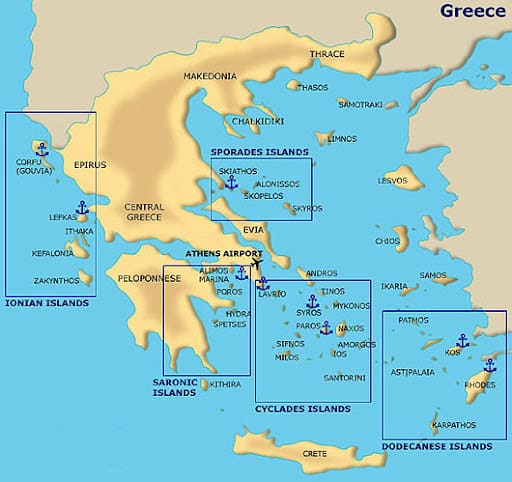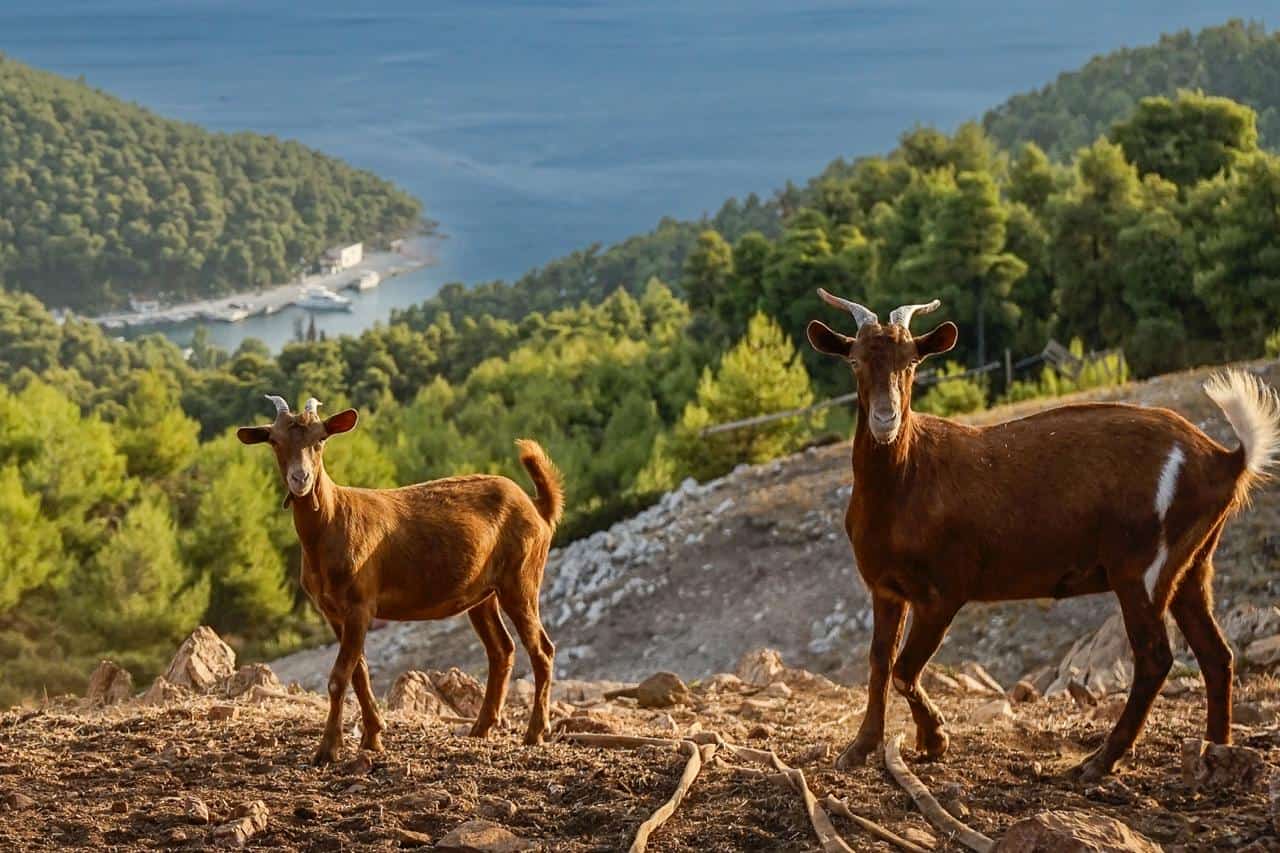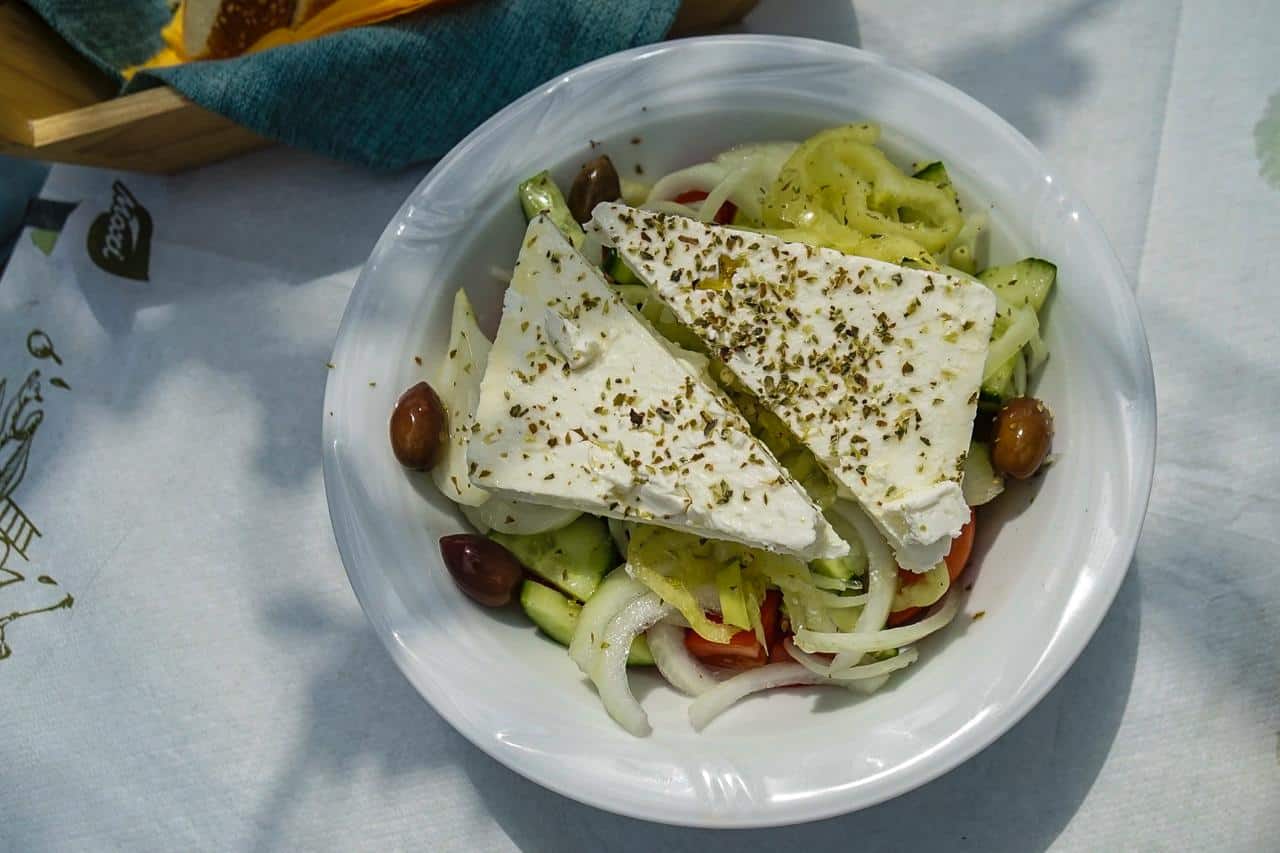Feta: A trip to Greece and my love affair with its cheese

“Happiness depends upon feta.” – Aristotle
SKOPELOS, Greece – With apologies to the great Greek philosopher of the 4th century B.C., I bent his quote a tad. I don’t think he’d mind. I’m sure when he sat on his marble stoop brooding over the state of mankind he munched on that salty, crumbly cheese that defines Greek cuisine to this day.
His famous quote, “Happiness depends upon us,” applies here. Feta gives me happiness. It’s a big reason why I come to Greece for a week every summer, including last week. I tan, I swim in the Aegean Sea but most of all, I eat Greek salads topped with one of my favorite cheeses in the world.
How it began

My love affair with feta began in 1978. Upon college graduation from Oregon, I backpacked around the world for a year and found myself in Greece surviving five months in Europe on $15 a day.
In Greece back then, you could live well on $15 a day. I hitchhiked south from the Greek second city of Thessaloniki and needed a cheap food to stretch my budget and keep me healthy. In the ancient town of Delphi, which dates back to 1600 B.C., I saw Peasant Salad on a menu. It was cheap and I didn’t want another gyro, the rotisserie meat-filled pita sandwich that passes for Greek food from Athens to Anaheim.

Out came this heaping bowl of cold, crisp, fresh vegetables. Juicy, chopped tomatoes. Slivers of crunchy bell peppers. Big, biting, black Kalamata olives. Topping it all was a big square chunk of white cheese, sprinkled with fresh oregano and splattered with local extra virgin olive oil.
The veggies were a kaleidoscope of bursting flavors, cool and fresh and invigorating. But topping it all, like an aperitif after a great meal, was the feta. Salty and tangy and soft, it perfectly complemented the raw, crispness of the vegetables. I left a few bites of pepper and onion.
But I ate every crumb of the feta. I’ve been eating it ever since. In dive tavernas in Athens. In rollicking bars on party islands. In romantic, beachside restaurants on my beloved Skopelos.

Even at home. Greek salads shame the tossed lettuce passing off as salads in Rome. I put feta in omelets, in pasta, in chicken. In fact, I purposely cut it from my diet one month before I leave for Greece just for that Wow! factor of the first bite in its homeland.
I take a bite, close my eyes and hear the waves lapping against the shore. Suddenly I’m Onassis, the other Aristotle, sailing around Greece in a gastro and island paradise.
How feta is made
Feta, like an Ancient Greek vase, is highly protected in Greece. In 2002 it received the Protected Designation of Origin from the European Union. It can only be called “feta” if produced in the traditional Greek way in the country. Feta can be sheep’s milk or a combination sheep and goat with goat milk not making up more than 30 percent of the total.
What you need to make feta is sheep and/or goat milk, brine and patience. It takes a long time. The milk is pasteurized then the whey and cheese curds are separated with lactic acid starter cultures. Rennet, a complex set of enzymes, is added and the whey is drained and the curd is placed in molds for 24 hours.
After it firms, it’s cut into cubes, salted and stored for up to three days. Then they are put in brine and refrigerated for two months.
Sounds complicated? It is. But it wasn’t always this way. Feta cheese dates back to 8th century B.C. when it was a common food in Ancient Greece. In The Odyssey, Homer wrote how Polyphemus, aka the Cyclops, made cheese and dried it in wicker racks.
OK, it’s a myth but feta is not. Homer ate something while penning 384 pages of adventure that thrilled us all in junior high literature classes.
Feta history
Also, is there any dish more perfect than the Greek salad? In menus around Greece, it’s often called a village salad or peasant salad or horiatiki salad.
The dish isn’t as old as feta. It wasn’t invented until the late 1960s and early ‘70s. In the Plaka, Athens’ historical center and major tourist destination, caterers found a way to get around the government fixing prices on vegetables. They chopped the vegetables, put them in a dish, topped them with a hunk of feta and boom!
They had a new dish they could charge more for tourists.
It’s still relatively cheap. On Skopelos, Greek salads range from about €8-€10. Feta means “slice” in Greek and while Greeks caution me that it’s fattening, it’s actually lower in fat than aged cheese like parmigiano or cheddar. One ounce contains 74 calories (compared to 110 in cheddar), six grams of fat, four grams of protein and 8 percent of the recommended daily requirement of Vitamin B12.
I ate it every day. I joked that if I eat one more bite of feta I’ll start quoting Aristotle. I just re-read this blog.
I wonder if there is feta rehab.
If you’re thinking of going …
How do you get there? Numerous European cities have direct flights to Skiathos, 10 miles west of Skopelos. I paid €275 for round trip from Rome. Numerous ferry companies operate between Skiathos and Skopelos. The 30-minute journey ranges from €17-€25 one way.
Where do you stay? Panormos Beach Hotel, Panormos, 30-2424-022-711, Hotel | Panormos Beach Hotel Skopelos, info@panormosbeach.com, info@panormosbeach.com. Located a 30-minute, €20 taxi ride from Skopelos’ port, Panormos Beach isn’t just one of the best hotels on Skopelos, it’s one of the best hotels I’ve stayed in Europe. It features an infinity pool where you have a huge buffet breakfast with a friendly beach bar open all day. Big rooms with balconies and a two-minute walk down the driveway to the beautiful – but rocky – beach across the street. (Non swimmers beware: The sea goes deep after about 20 feet.) I paid €865 for seven nights. The price is higher in August.
Where do you eat? Delfini, Panormos, 30-242-402-4304, https://skopelos.com/listings/skopelos-to-delfini-tis-skopelou-restaurant/. On main drag across the street from the beach, the romantically lit restaurant serves the best fresh fish in the village of Panormos. Also, save room for the excellent baklava.
When do you go? May, June or September. The weather is similar with a touch more rain but the sea remains warm until October. Avoid August. Greece is packed. Even little Panormos is crowded.
More information: Holiday Islands, 30-2424-029-036, www.holidayislands.com, info@holidayislands.com. Travel agency on Skopelos specializes in accommodations in the Sporades Islands chain.


September 10, 2024 @ 3:13 pm
I love feta too but I have never been to Greece. I am amazed that you go in summer. How do you do it with the hordes of crowds, worse that in Italy?
September 10, 2024 @ 4:43 pm
We stay in a little village on the small island of Skopolos so the crowds aren’t so bad in August when Marina usually had her time off. But this year we went the first week in September. The crowd wasn’t much different but the water was still warm. We reserved for September next year, too.
October 15, 2024 @ 1:26 am
There is certainly something about a salad that a feta topping elevates. This will sound strange but: I’m from Buffalo, NY where there are (were) loads of little Greek diners that slung cheap plaka fish dishes with Greek potato and of course a Greek salad with the most amazing dressing ever, so this dish has become a staple for me as well. Neat to see another Yank who has gulped the Kool-aid.
Thanks for this post, and the rest of your blog looks great as well. I’m enjoying reading.